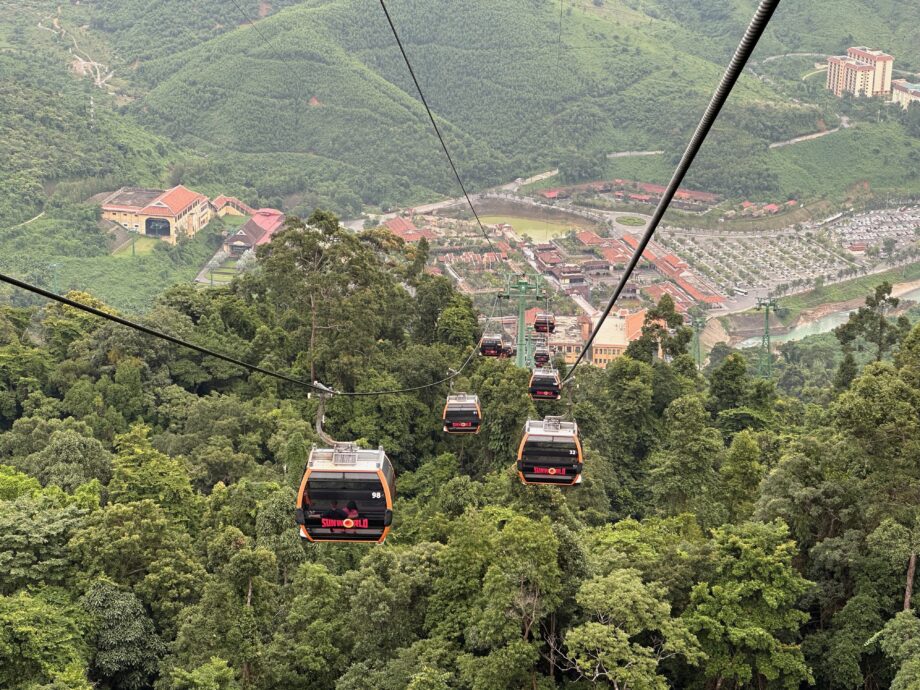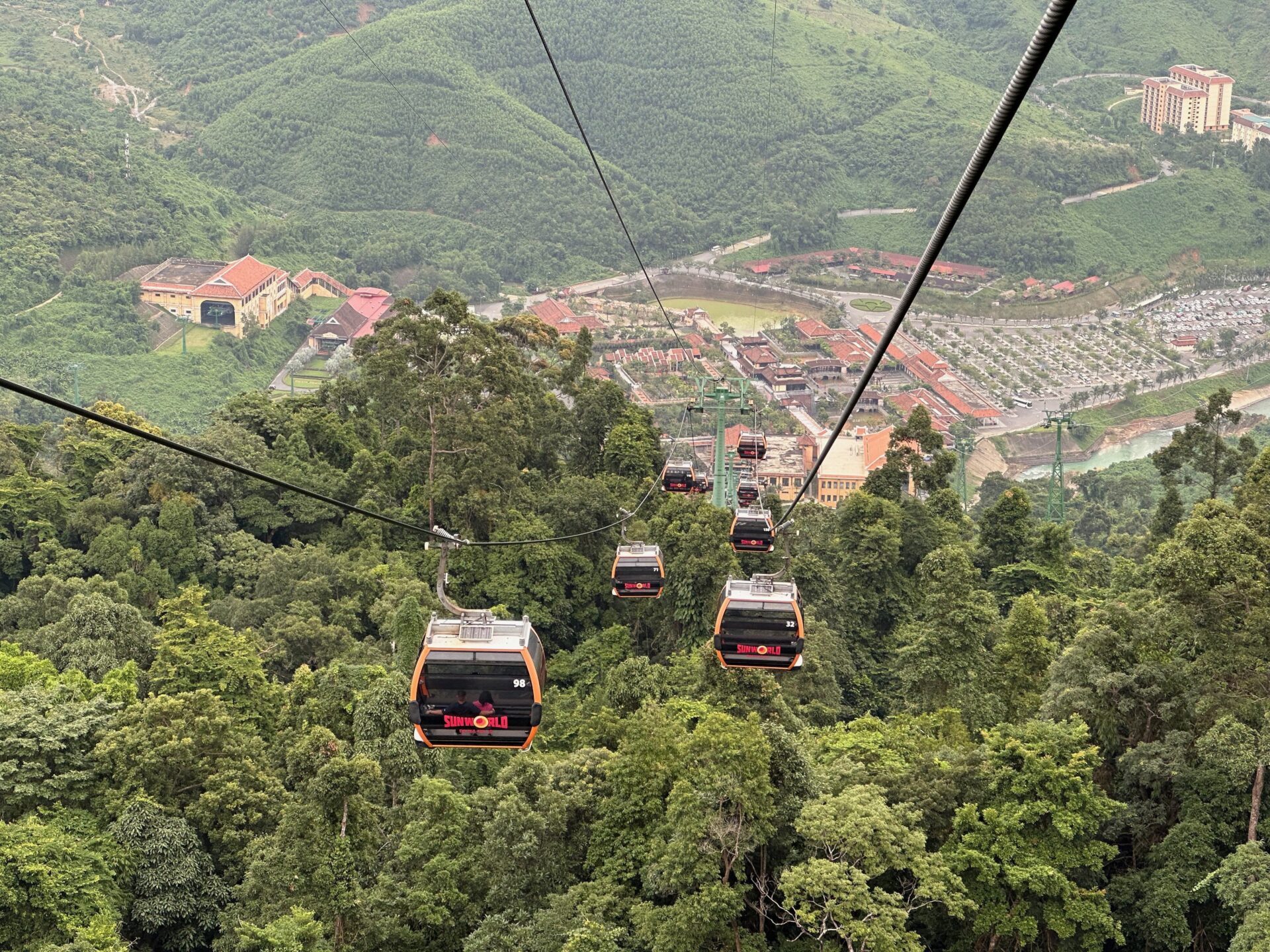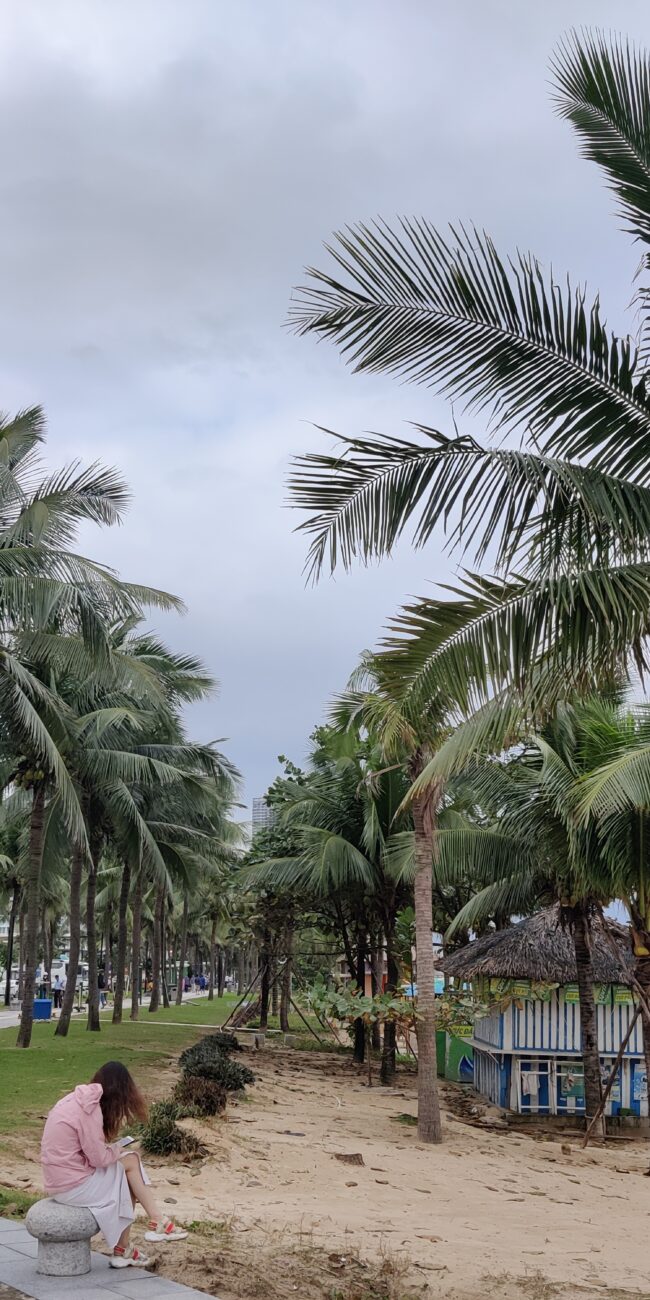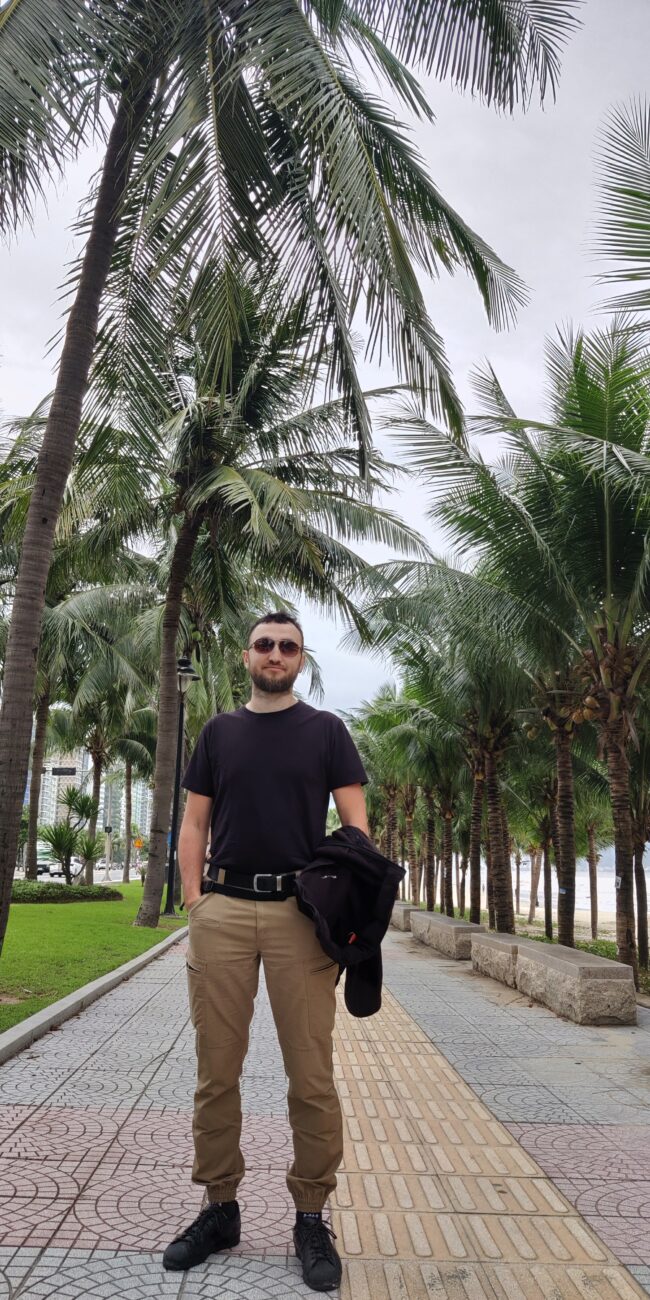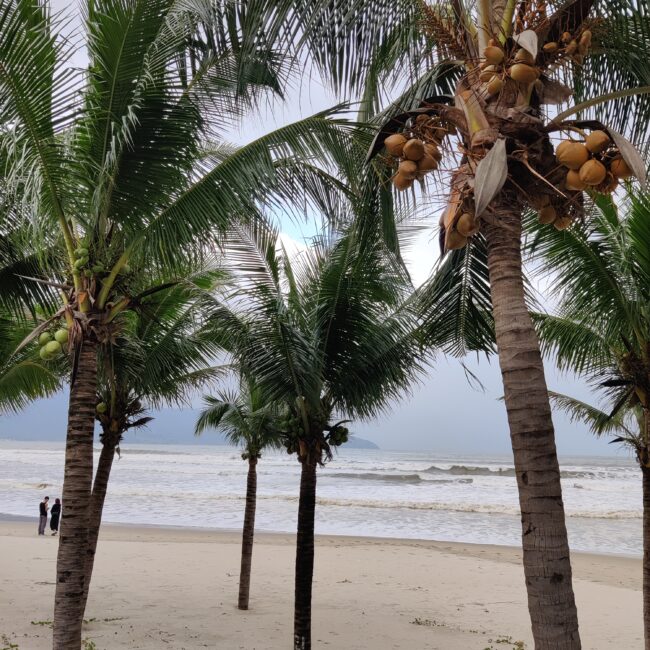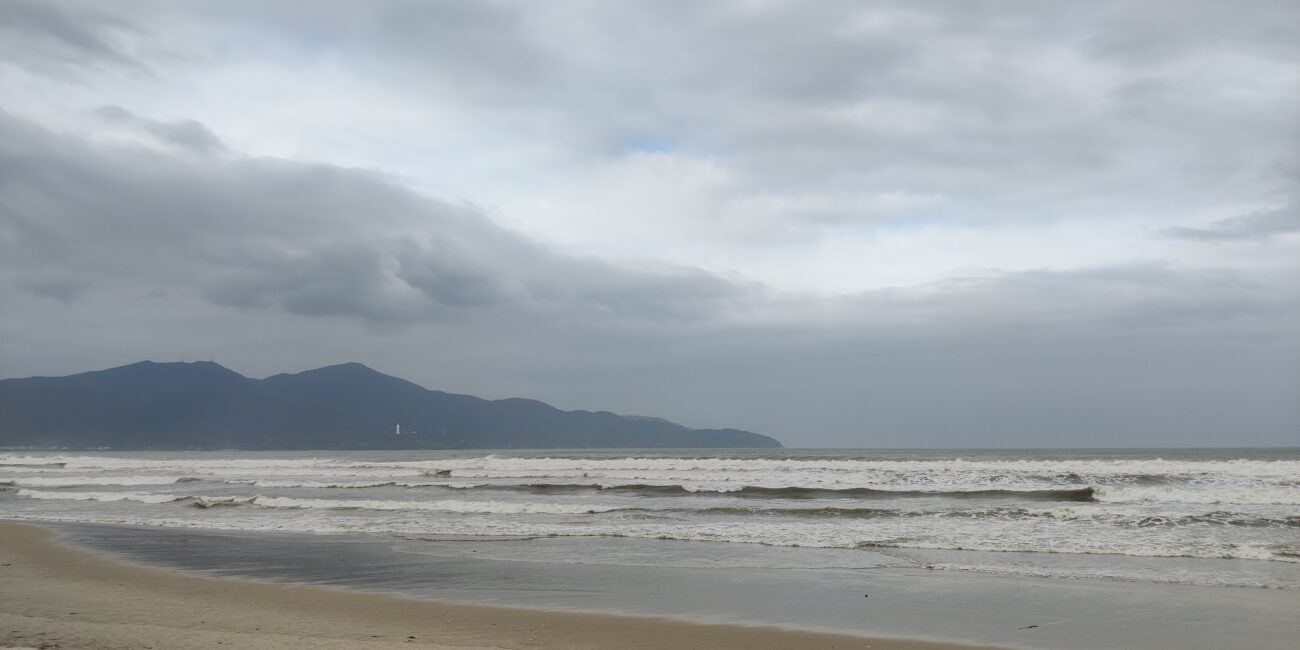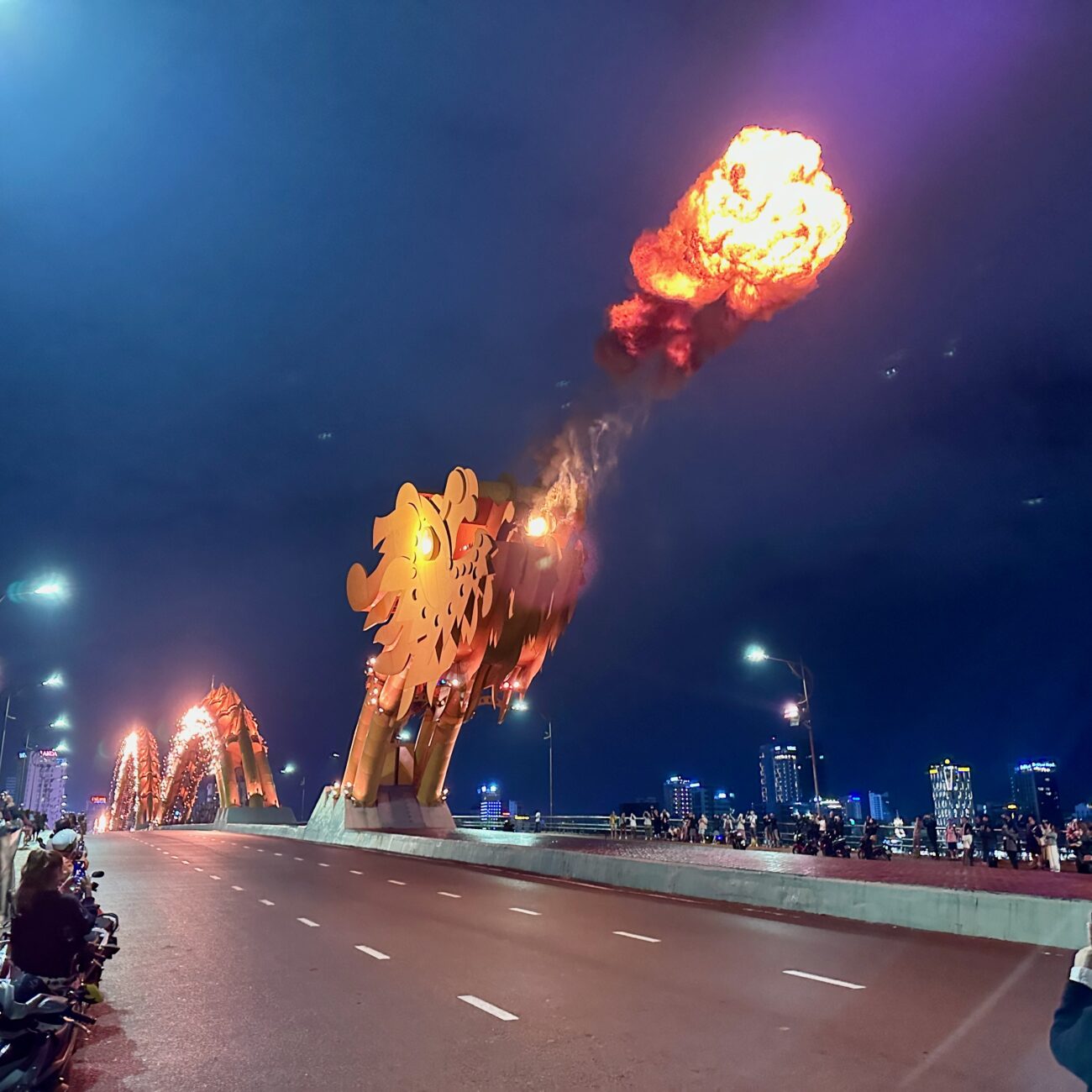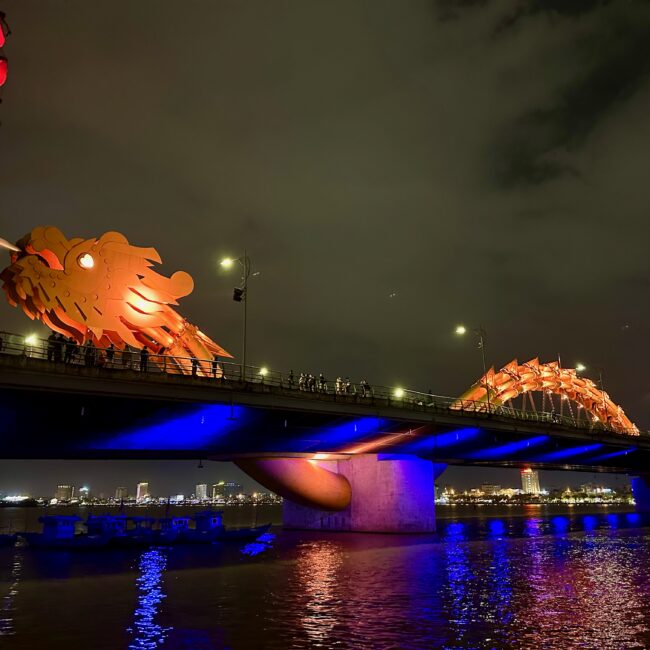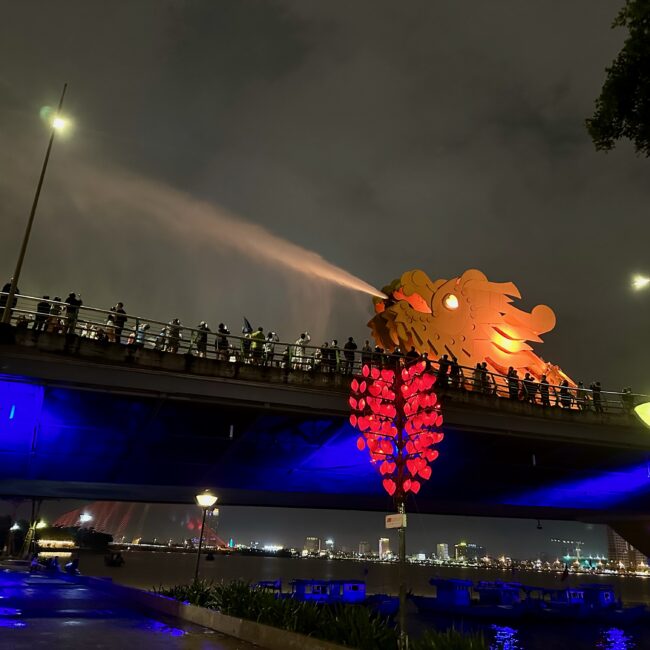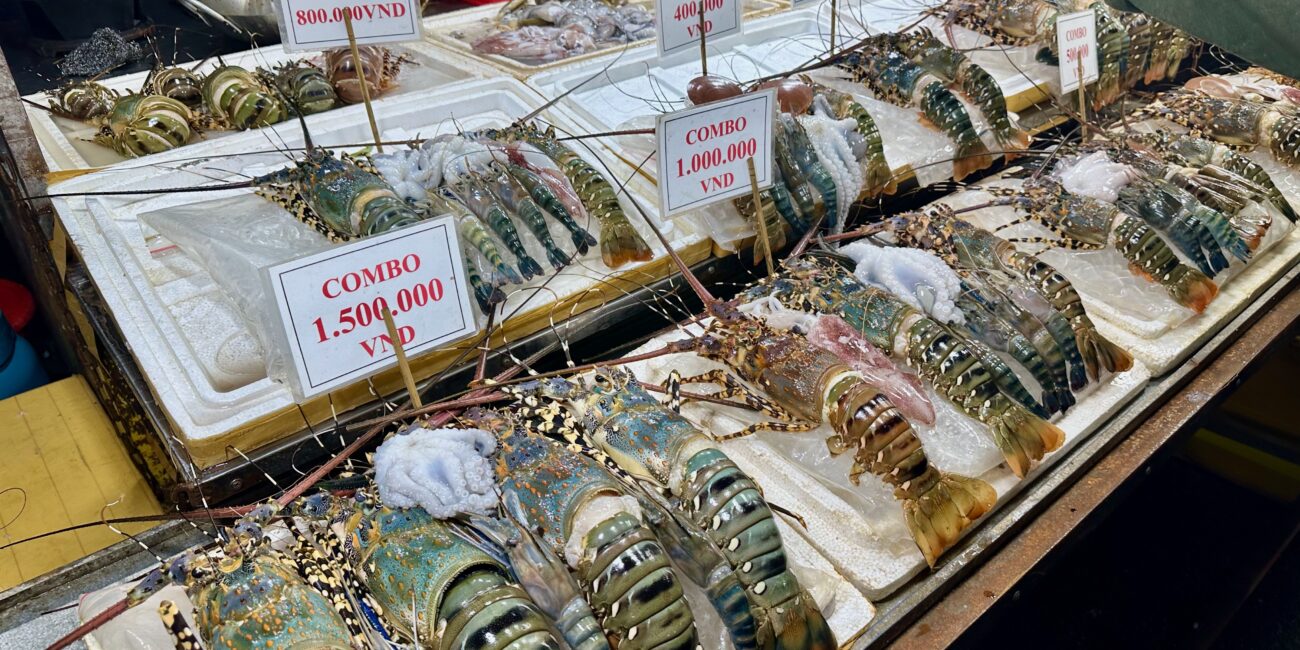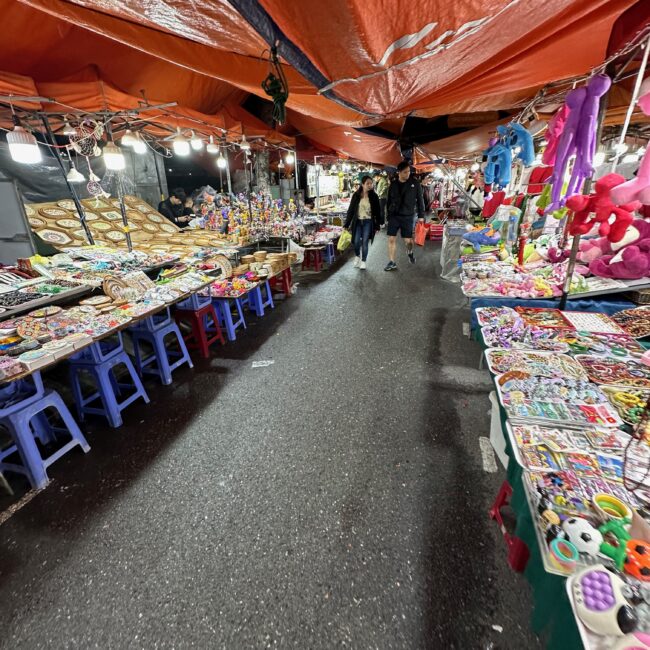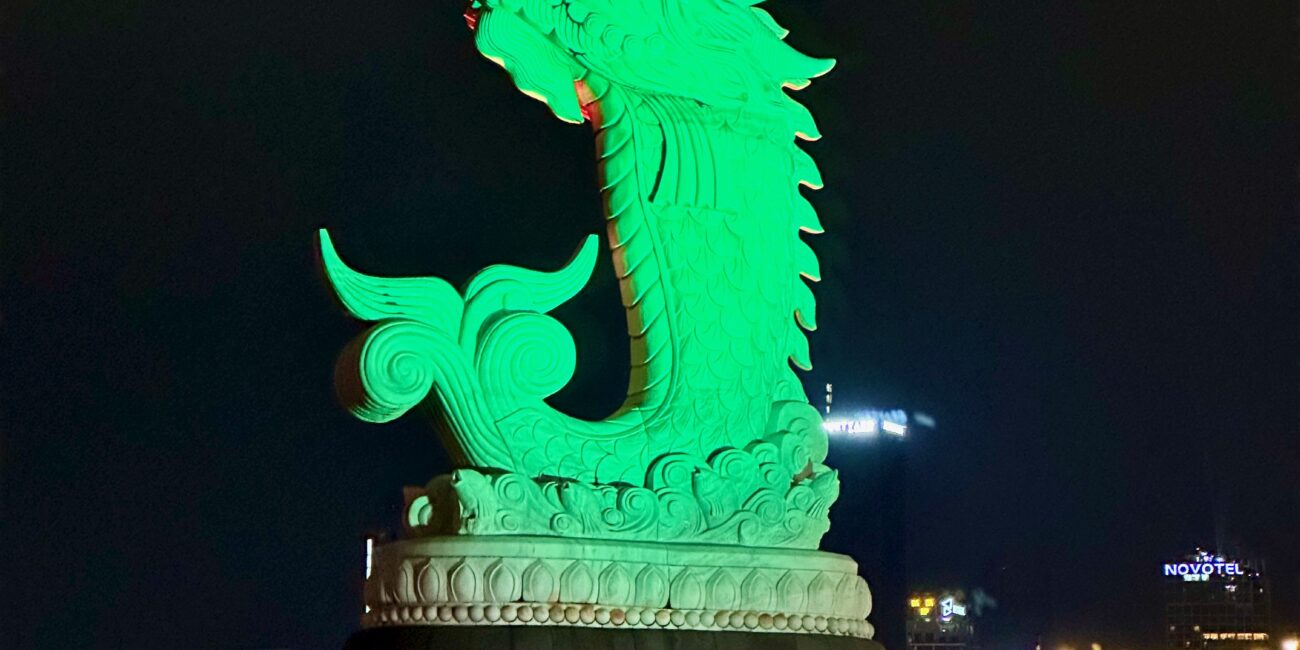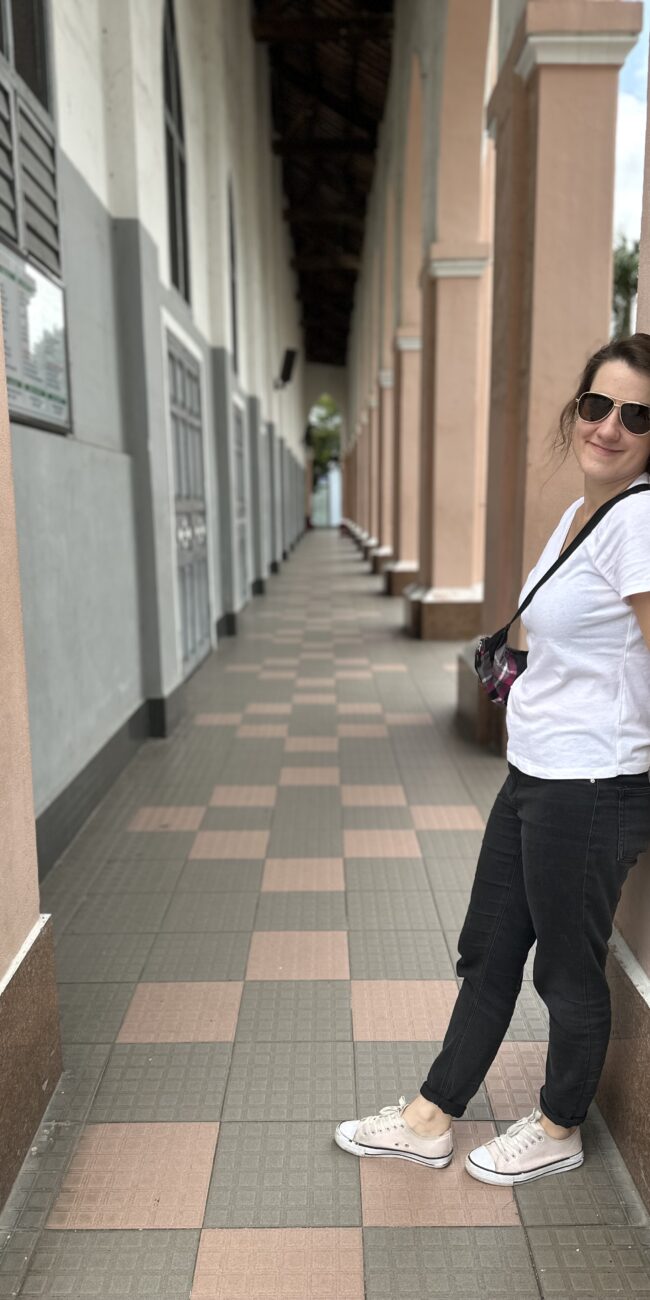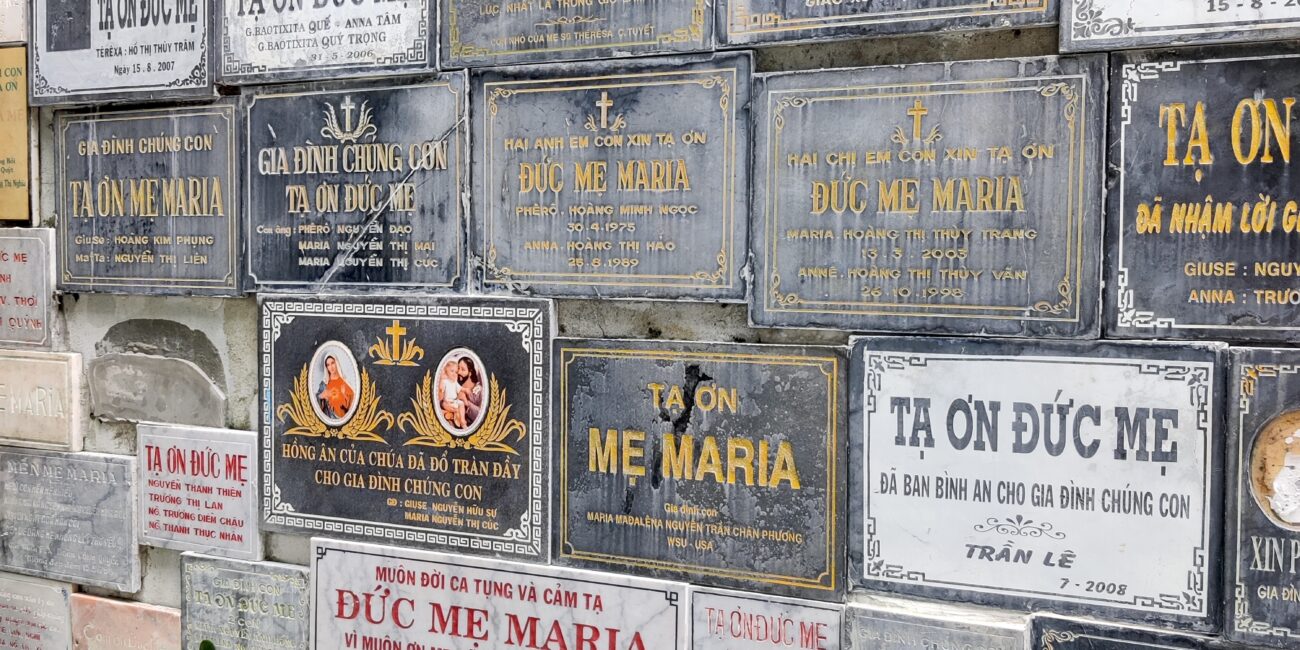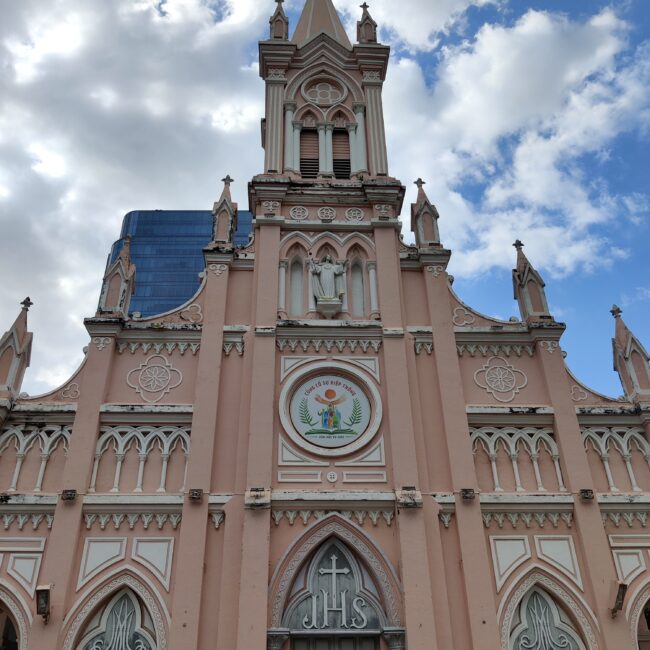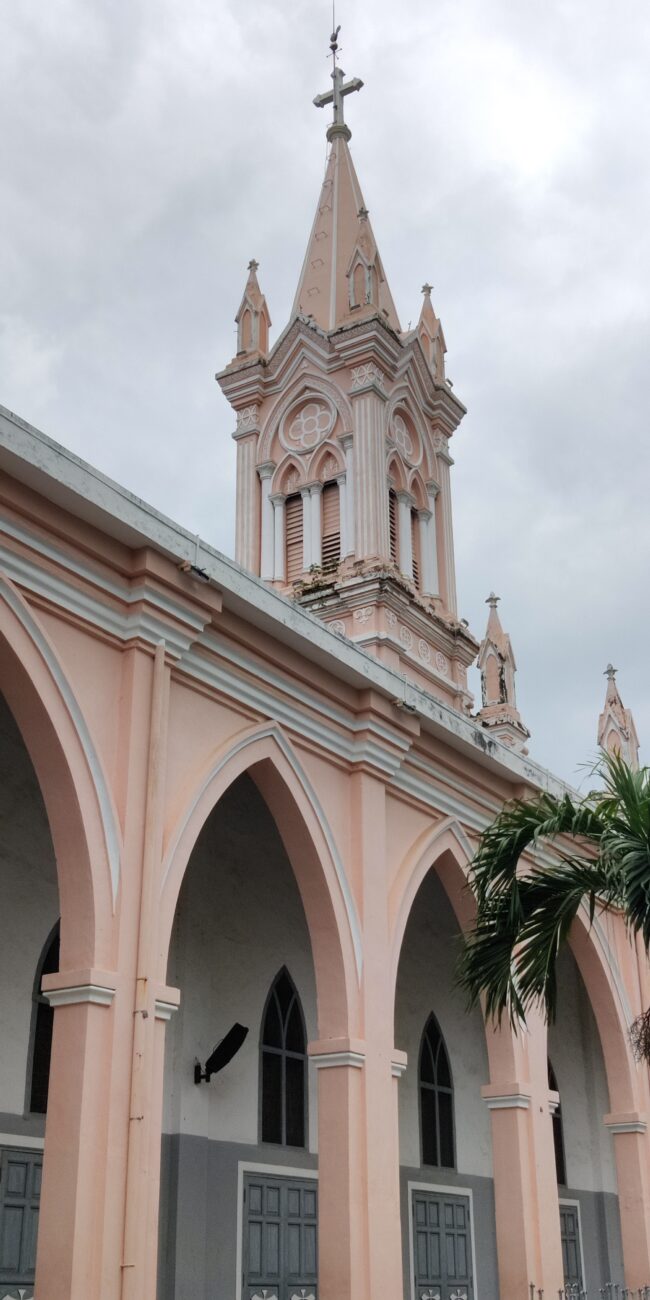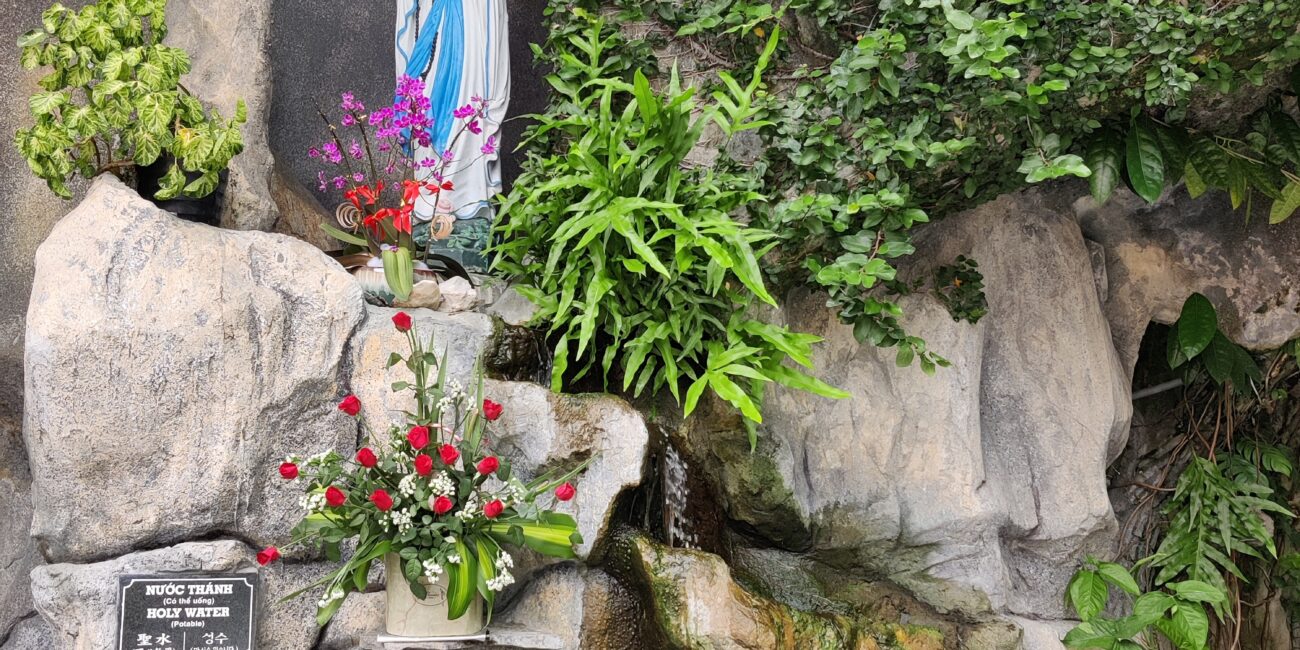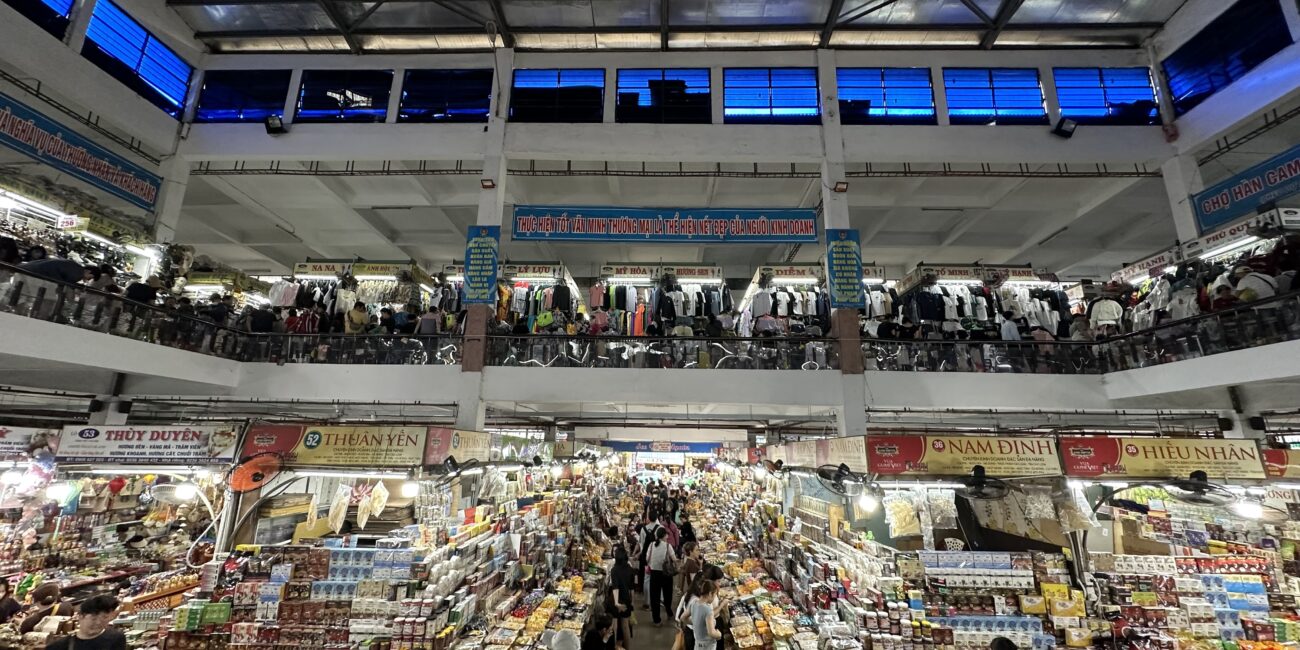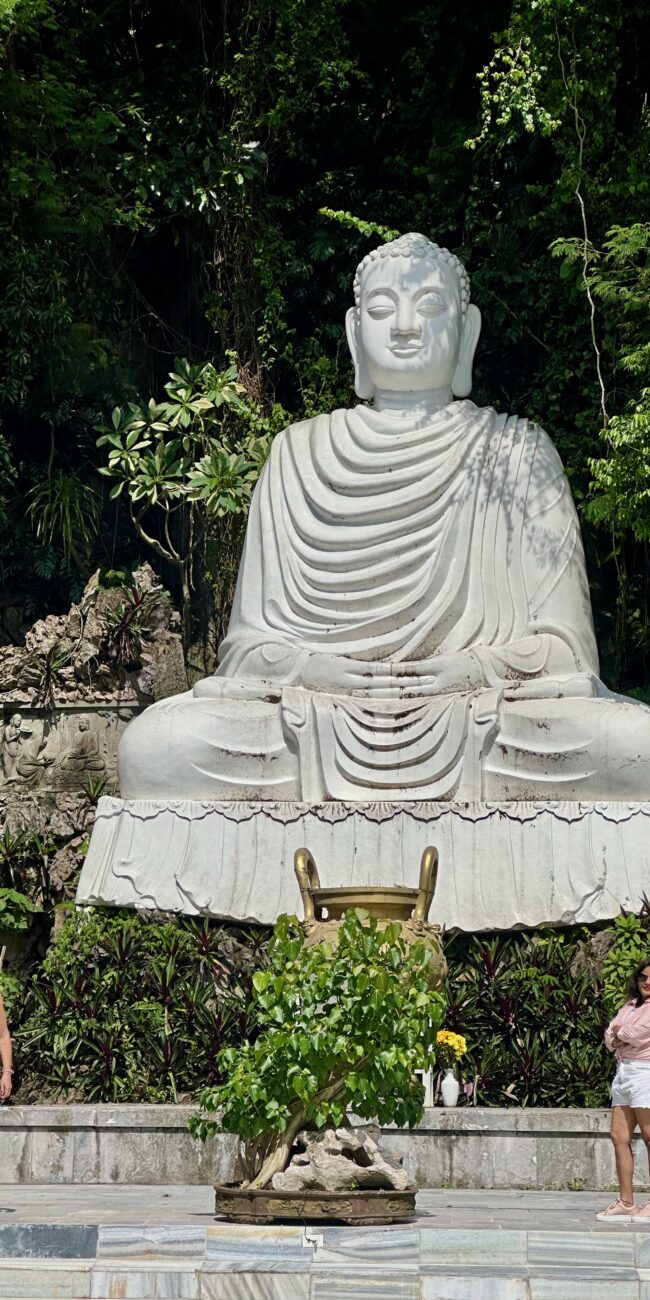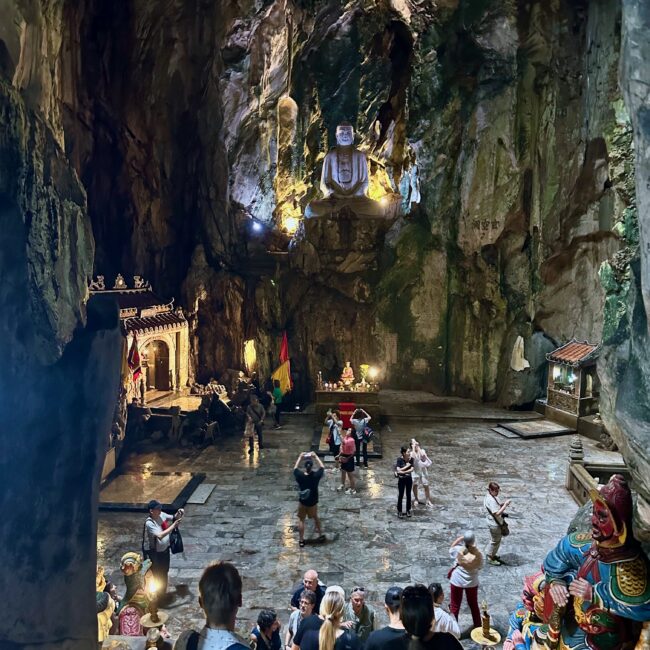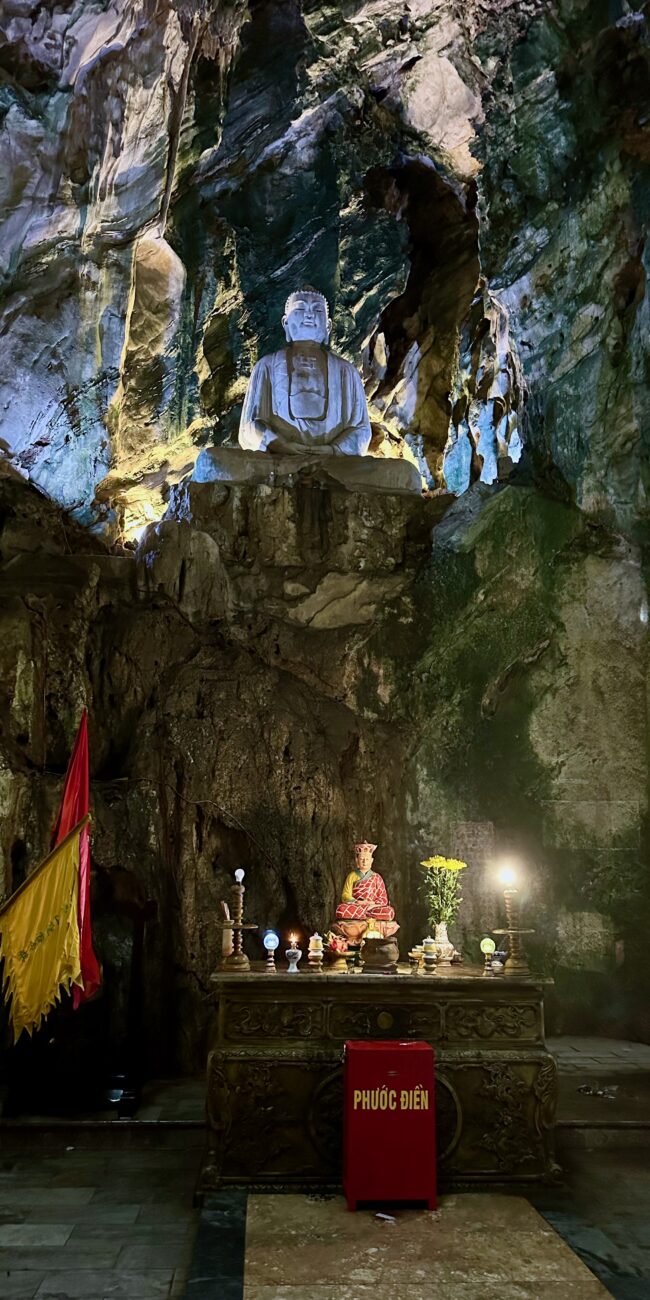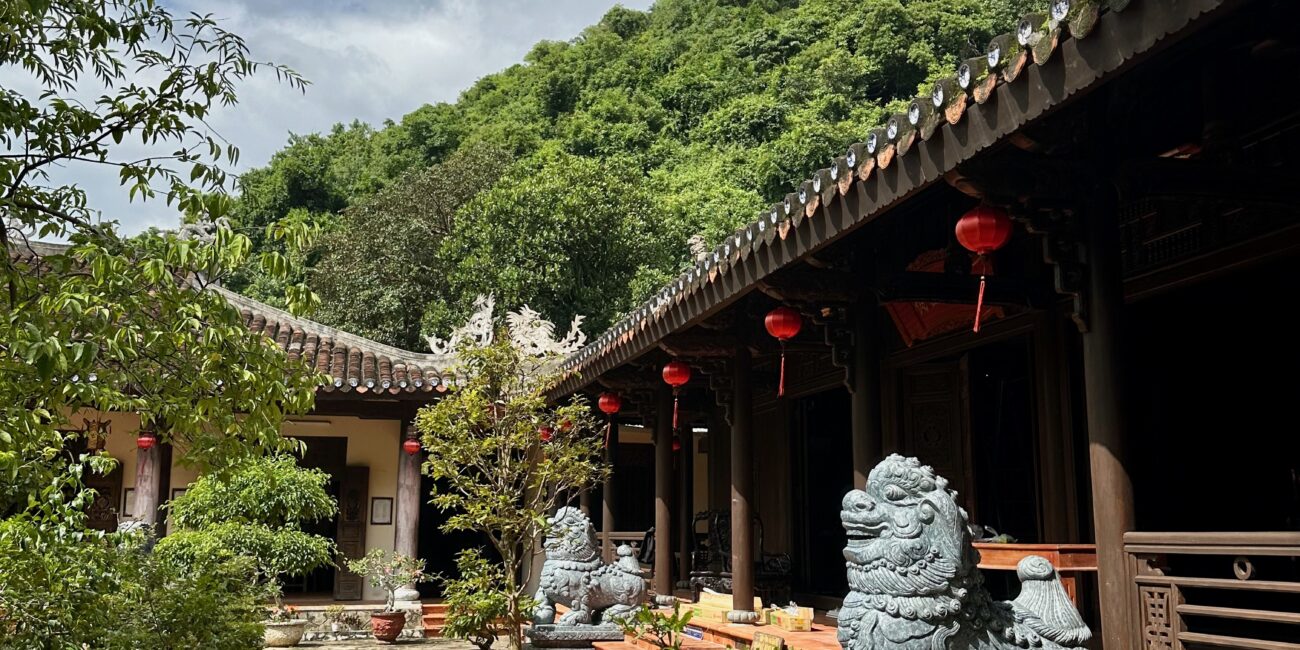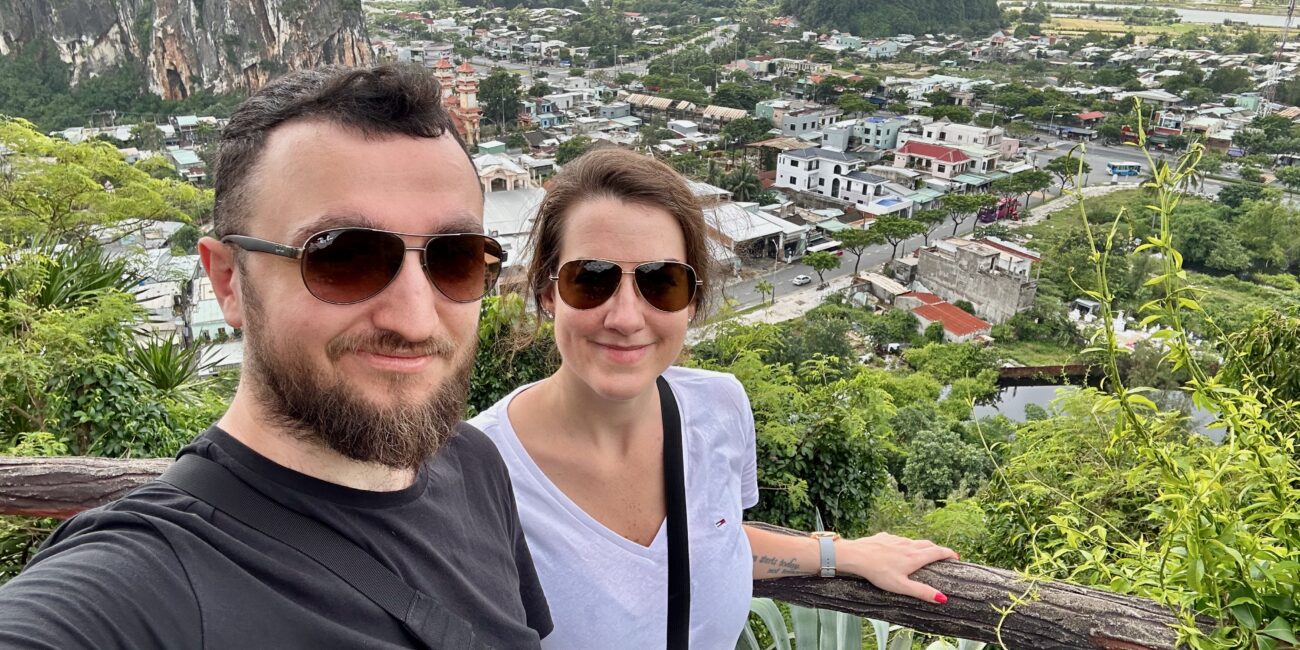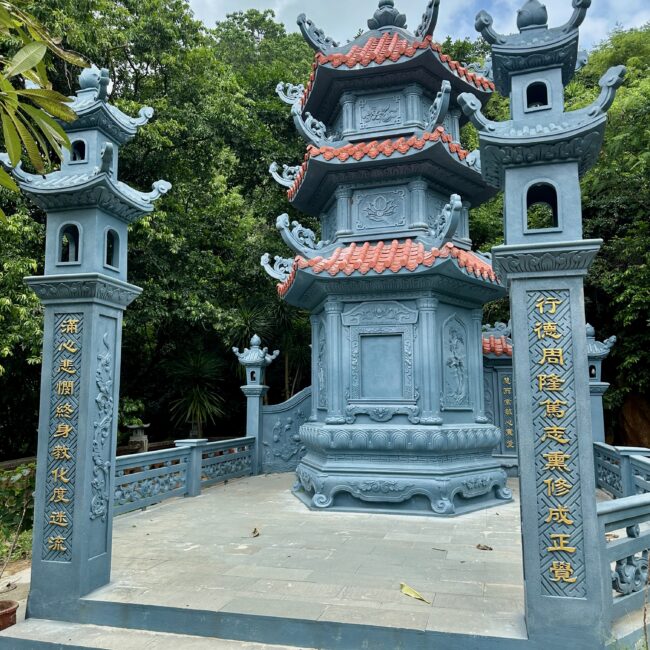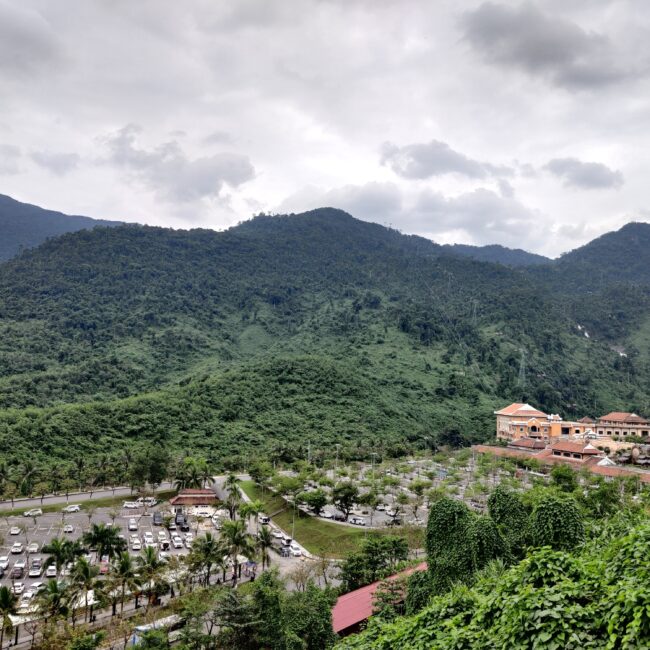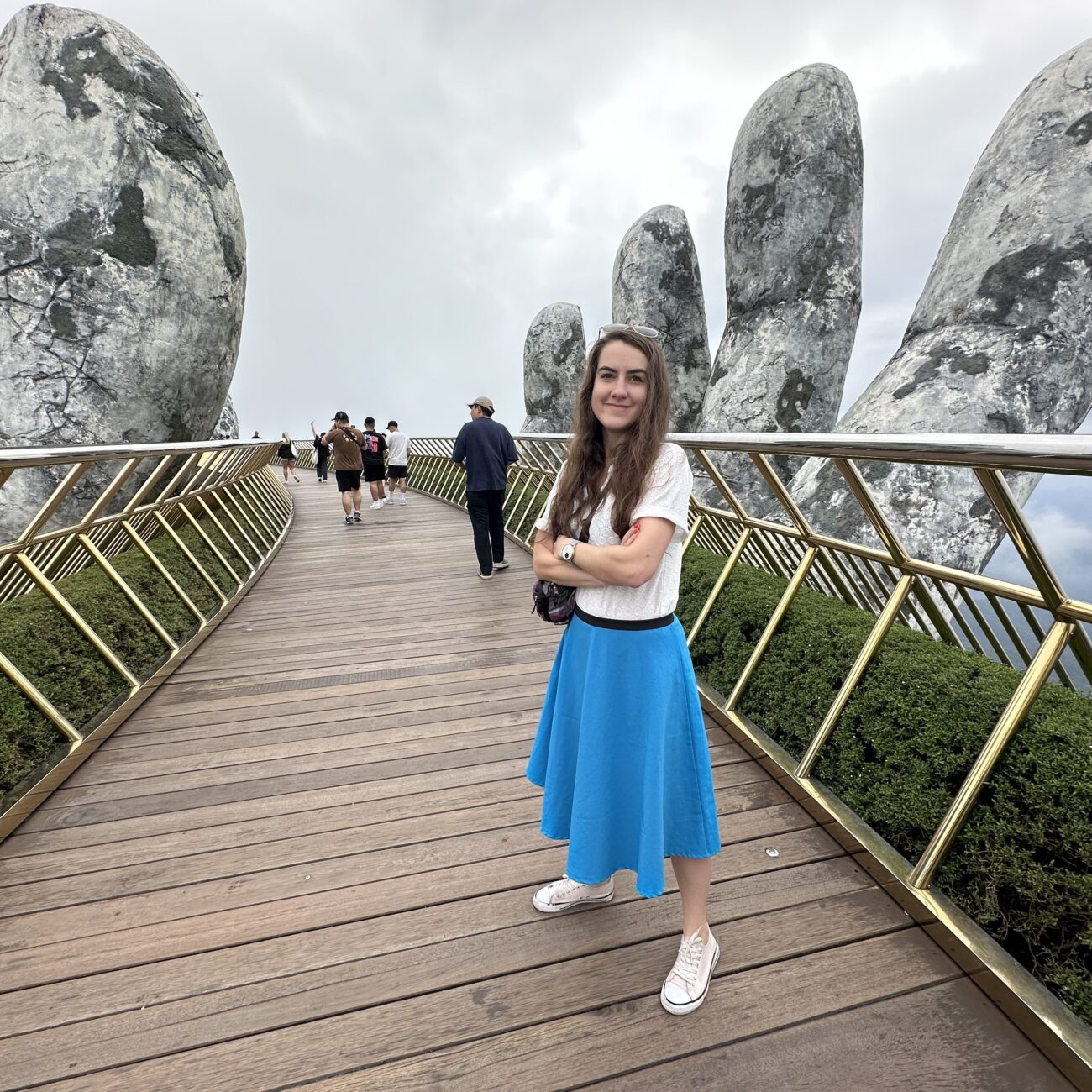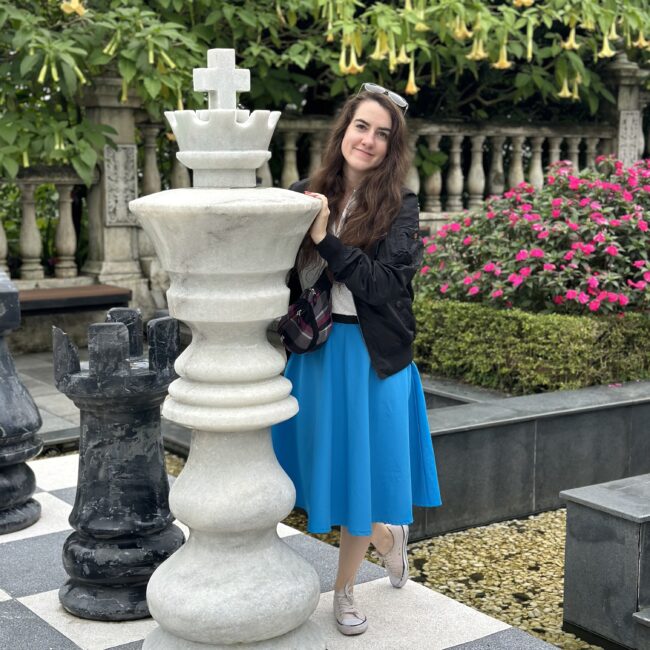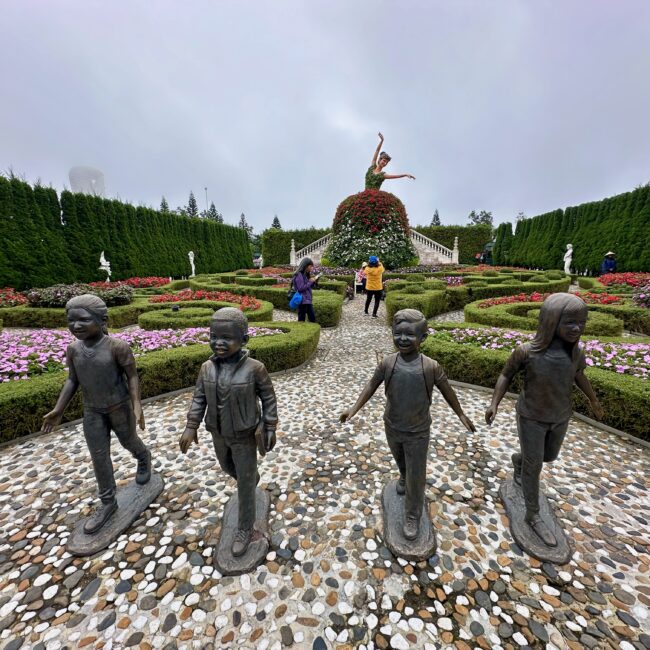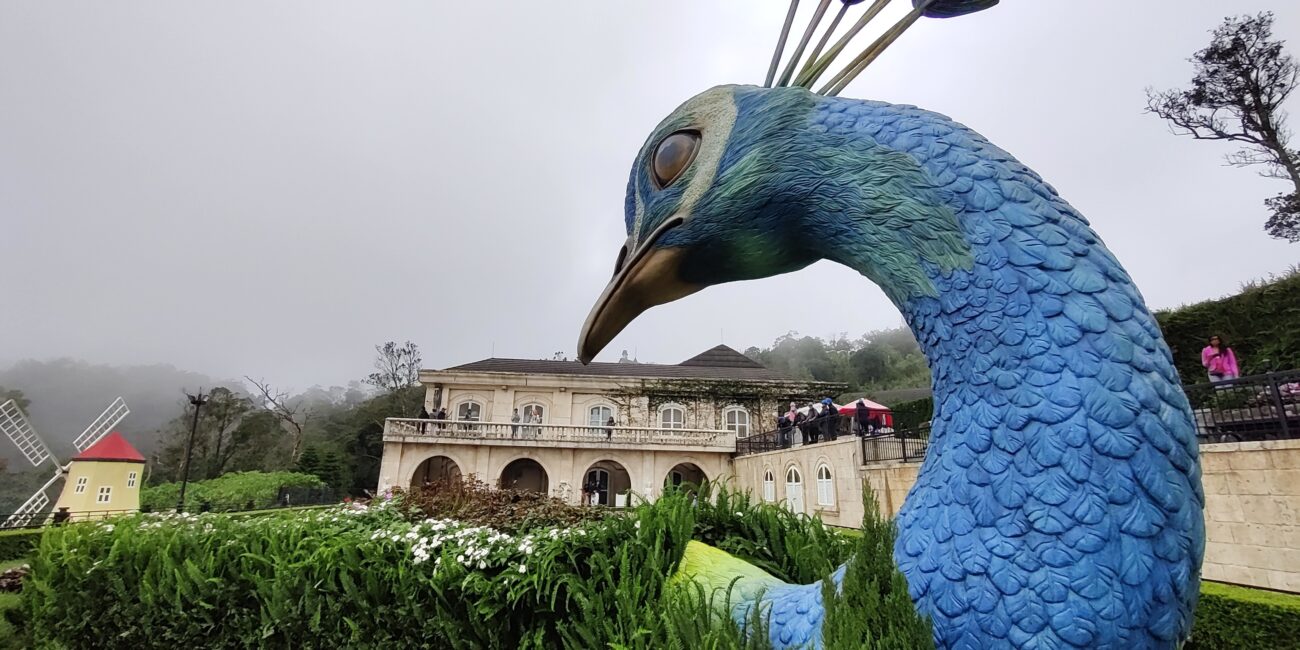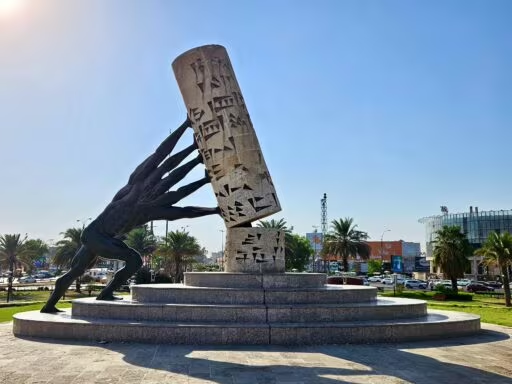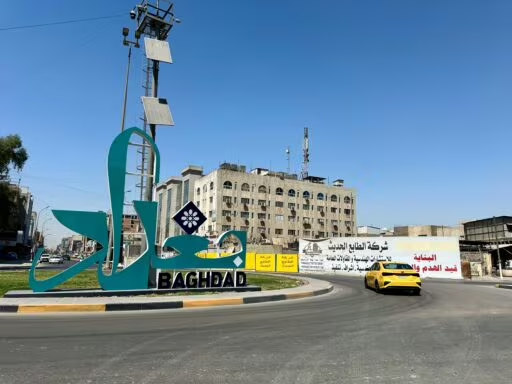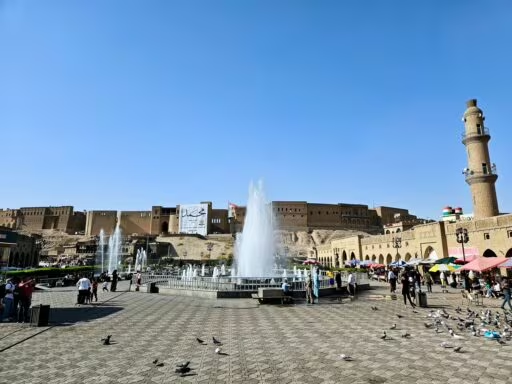This post is also available in:
Polski
Hello! 👋
During our stay in Da Nang, we had the chance to visit some really interesting places. The coastal climate and slightly breezy weather added charm to our trips—although at times, we missed the sun from southern Vietnam. Nonetheless, we had a great time here, discovering local attractions and beautiful views.
If you haven’t read our summary of the stay in Da Nang yet, 👉 make sure to check out the previous article. You’ll find our experiences related to transportation, accommodation, and food there.
And now we invite you to the next part, in which we will tell you about the places to see in this region! 🏝️
My Khe Beach
viet. Biển Mỹ Khê
My Khe Beach is one of the most famous beaches in Da Nang, stretching for about 10 kilometers from the Sơn Trà Peninsula to the Marble Mountains.
During our stay, the weather was windy, and a red flag was raised on the beach, signaling a swimming ban for safety reasons. Despite that, a walk along the beach was enjoyable.
There are many restaurants serving fresh seafood, cafés, and hotels around the beach, making it a popular spot for both tourists and locals.
Dragon Bridge
viet. Cầu Rồng
Dragon Bridge is one of the most iconic attractions in Da Nang, instantly becoming a symbol of the city. The bridge opened in 2013 and has since attracted both tourists and locals.
The bridge is 666 meters long and was designed in the shape of a dragon, reflecting Vietnamese culture and beliefs. The dragon symbolizes strength, prosperity, and happiness, and its impressive structure seems to “cut” through the Hàn River. The bridge is striking both during the day and at night, when it’s illuminated with LED lights, giving it a unique appearance.
The main attraction of the bridge is the shows, during which the dragon “breathes” fire and “spits” water. These events take place on weekends (Saturday and Sunday) and during holidays at 9:00 PM. It’s definitely a moment you shouldn’t miss—the bridge comes to life, and crowds gather to admire the spectacle.
The bridge is not just a tourist attraction—it is an important part of Da Nang’s transportation infrastructure. It connects the city center with the beaches located along the eastern coast. During the day, it can get crowded, especially during peak hours, so it’s worth keeping this in mind if you plan to cross the bridge.
Son Tra Night Market
viet. Chợ Đêm Sơn Trà
Son Tra Night Market is one of the liveliest places in Da Nang, worth visiting in the evening. Located near Dragon Bridge, it’s the perfect spot for small shopping, trying local specialties, and soaking up the city’s nighttime atmosphere.
At Son Tra Night Market, you’ll find plenty of places to eat—from seafood to local snacks. The food tempts with its smells, and the selection is really diverse. We only indulged in some local beer. However, we decided to pass on the more experimental options.
When it comes to shopping—aside from souvenirs and handmade crafts, the market is full of counterfeit items from well-known brands. Handbags, watches, shoes—everything you can find in boutiques, you’ll find here in a “virtually indistinguishable” version (at least according to the sellers). The vendors can be really convincing—from claims that it’s a “100% original” to stories about the brand owner personally kissing the product goodbye before it left the factory.
Dragon Carp Fountain
viet. Tượng Cá Chép Hóa Rồng
Dragon Carp Fountain is one of the icons of Da Nang, located along the waterfront on the Sơn Trà Peninsula. It is a sculpture depicting a carp transforming into a dragon—a symbol of prosperity, strength, and good fortune in Vietnamese culture.
The sculpture itself stands about 7.5 meters tall and is made of white marble. Interestingly, the fountain has the feature of spraying water from the dragon’s mouth, which adds to its dramatic effect—especially in the evening when it’s beautifully illuminated.
This spot attracts both tourists and locals, who are eager to take photos here. The view of the Han River and the nearby bridges (including the Dragon Bridge) makes it a very photogenic location.
Da Nang Cathedral
viet. Giáo Xứ Chính Toà Đà Nẵng
Da Nang Cathedral, also known as the Pink Church, is one of the city’s iconic landmarks. It was built in 1923 by French colonizers and still serves as an active place of worship for local Catholics.
The cathedral stands out with its pink facade, giving it a unique appearance and making it one of the most photographed places in Da Nang. Its Gothic style, slender towers, and stained glass windows evoke traditional European churches, creating an interesting contrast with the modern buildings around it. At the top of the tower, there is a rooster statue—a symbol of vigilance and penance.
👉 For more information, visit the official website.
Han Market
viet. Chợ Hàn
Han Market is one of the oldest markets in Da Nang. Located in the city center, it is a popular spot for both tourists and locals.
The market is divided into two main floors. The lower floor is dominated by food—fresh fruits, vegetables, meat, fish, and spices. The smells in the air can be intense, especially in the fish section, so those sensitive to such scents should be prepared.
The upper floor is where you can find clothing, shoes, textiles, bags, and plenty of souvenirs. Unfortunately, a large portion of these items are counterfeit brands—ranging from watches to handbags to clothes. It’s important to be cautious, especially if you plan to bring them back to Europe. Customs officers may not share the same enthusiasm as the vendors.
Han Market is the perfect place to practice your bargaining skills. Initial prices are usually inflated, so it’s worth negotiating, especially for larger purchases.
The Marble Mountains
viet. Ngũ Hành Sơn
The Marble Mountains are a group of five limestone and marble hills located about 9 km south of Da Nang. Each mountain is named after one of the five elements: metal (Kim), wood (Mộc), water (Thủy), fire (Hỏa), and earth (Thổ). The most frequently visited mountain is Thủy Sơn (Water Mountain), known for its caves, pagodas, and beautiful views of the surrounding area.
This is where we spent the most time. A walk through the area is a great opportunity to see interesting rock formations, hidden caves, and pagodas.
Huyền Không Cave is one of the most fascinating caves—light streaming through openings in the ceiling creates a magical atmosphere. Inside, there are statues of Buddha and altars, making it a place of both historical and spiritual significance.
Am Phủ Cave, also known as the “Hell Cave”, has a completely different character. It’s a darker place with symbolism related to life after death in Buddhist beliefs. It’s definitely impressive, but it can be a bit overwhelming for those with weaker nerves.
Pagodas
The mountain area also features numerous pagodas, which highlight the spiritual character of the place.
- Linh Ứng impresses with its traditional Vietnamese architecture. It’s a perfect place for a moment of meditation or relaxation.
- Tam Thai is one of the oldest temples in the region, built in the 17th century. It is an important pilgrimage site.
The ascent to the top of Thủy Sơn is a challenge— the stairs are steep, uneven in places, and the final stretch even requires climbing over rocks. Therefore, we definitely recommend wearing sturdy shoes instead of flip-flops.
However, the reward at the top is worth the effort—the view from the lookout point is breathtaking. The panorama includes the coastline, Da Nang, and the surrounding hills. If you’re planning to take photos, it’s best to come in the morning or at sunset, as the light is the most beautiful during those times.
Useful tips
- Take water! Walking in the heat and climbing can be tiring. It is better to have a supply of water with you.
- Flip-flops are a bad idea, especially for the steeper sections and at the entrance to the viewpoint.
- If you want to know more details about the history and symbolism of the place, you should think about a guidebook.
👉 For more information, visit the official website.
SunWorld Ba Na Hills
viet. Sun World Bà Nà Hills
Sun World Ba Na Hills is an expansive entertainment and leisure complex located about 20 km from the center of Da Nang, at an altitude of 1,487 meters above sea level. Due to its unique location, it offers visitors the experience of all four seasons in one day, along with numerous attractions that draw tourists from around the world.
You can reach the complex by scooter, and the route is quite pleasant. However, it’s best to leave before noon to make the most of your time there. Tickets can be purchased on-site, allowing you to assess the weather conditions before buying them.
One of the main attractions is the cable car ride, which has set several Guinness World Records. During the journey, you can enjoy breathtaking views of the mountains and forests. The cable car operates daily from 8:00 AM to 10:00 PM.
Sun World Ba Na Hills is one of those places that’s hard to describe in just a few sentences. There are countless attractions on-site— from the famous Golden Bridge, whose photos have gone viral worldwide, to the French Village, where you can feel like you’re in a European town. You’ll also find beautiful themed gardens, temples, and pagodas, and for adrenaline lovers, there’s Fantasy Park with numerous attractions for both kids and adults.
👉 For more information, visit the official website.
Summary – next stop Sa Pa
We definitely enjoyed what we were able to see here. We’d love to return again, preferably during a time with more favorable weather. Although, we’d probably have to brace ourselves for larger crowds of tourists.
We took plenty of photos, got a bit tired (especially during the climbs!), but we’ll definitely look back on this stop in our journey with great memories.
And now it’s time to move on – the direction of Sa Pa! What awaits us there? About that already in the next part of our report. 🚞 ⛰️

